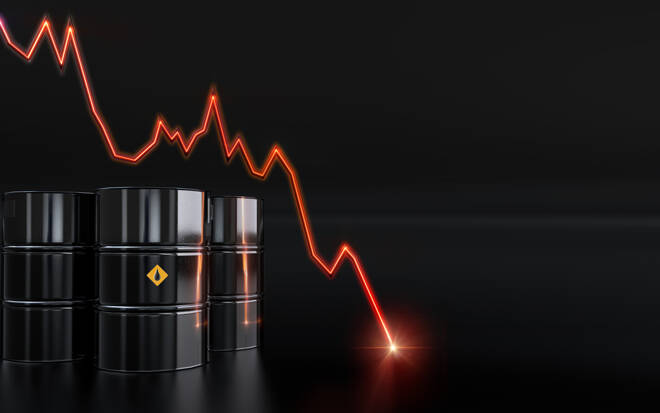Advertisement
Advertisement
Oil Prices Set To Fall As New ‘Iran Nuclear Deal’ Nears Completion
By:
A new nuclear deal with Iran appears imminent and with it a 5-10 percent immediate drop in oil prices
Since the unilateral withdrawal of the US in May 2018 from the Joint Comprehensive Plan of Action (JCPOA) – the ‘nuclear deal’ – Iran’s level of crude oil production and exports has been severely constrained due to the resultant US-led sanctions against the Islamic Republic. However, this impediment to the full flow of Iranian crude back into the global oil markets is now only one step away from being removed.
The US is poised to revoke the designation of ‘Foreign Terrorist Organisation’ (FTO) from Iran’s Islamic Revolutionary Guard Corps (IRGC). This designation has long been a major obstacle to Iran agreeing a new JCPOA, and would in turn allow Tehran to finally commit to the rules and regulations of the Financial Action Task Force (FATF). The lack of Iran’s adherence to the FATF has similarly been the last key sticking point for the US – and the other signatories to the original JCPOA (the U.K., France, China, and Russia) plus Germany – to ratify the new iteration of the Agreement.
Potential 5 To 10 Percent+ Fall In Oil Prices
The signing of a new JCPOA and the subsequent removal of all sanctions against Iran would unleash the enormous oil production and export potential of the country once again, with both short-term and longer-term bearish effects on global oil prices. Regardless of any other considerations, Iran remains a great oil power, with an estimated 157 billion barrels of proven crude oil reserves, nearly 10 percent of the world’s total and 13 percent of those held by OPEC.
According to estimates from oil sector analysts at global energy markets intelligence company Kpler, with the removal of sanctions on it, Iran could see an 80 percent recovery of full production within six months and a 100 percent recovery within 12 months. “[As at the beginning of Q4 2021] Iranian crude oil production capacity stood at 3.9 to 4.0 million barrels per day [bpd] according to the NIOC [National Iranian Oil Company] with current output holding near 2.4 million,” according to Kpler.
“Ultimately, we believe Iranian production could technically jump by 1.7 million bpd including 200,000 bpd of condensate and LPG/ethane, in a 6 to 9 month period from when sanctions are lifted and an immediate impact of a 5-10 percent fall in the oil price would be likely,” the company concluded.
About the Author
Simon Watkinsauthor
Simon Watkins is a former senior FX trader and salesman, financial journalist, and best-selling author. He was Head of Forex Institutional Sales and Trading for Credit Lyonnais, and later Director of Forex at Bank of Montreal. He was then Head of Weekly Publications and Chief Writer for Business Monitor International, Head of Fuel Oil Products for Platts, and Global Managing Editor of Research for Renaissance Capital in Moscow.
Did you find this article useful?
Latest news and analysis
Advertisement
